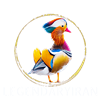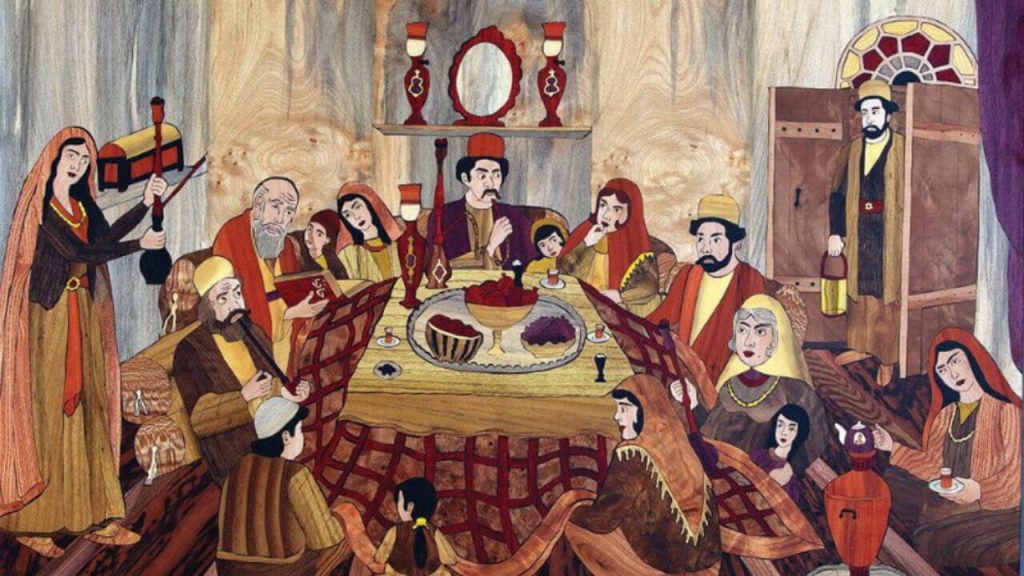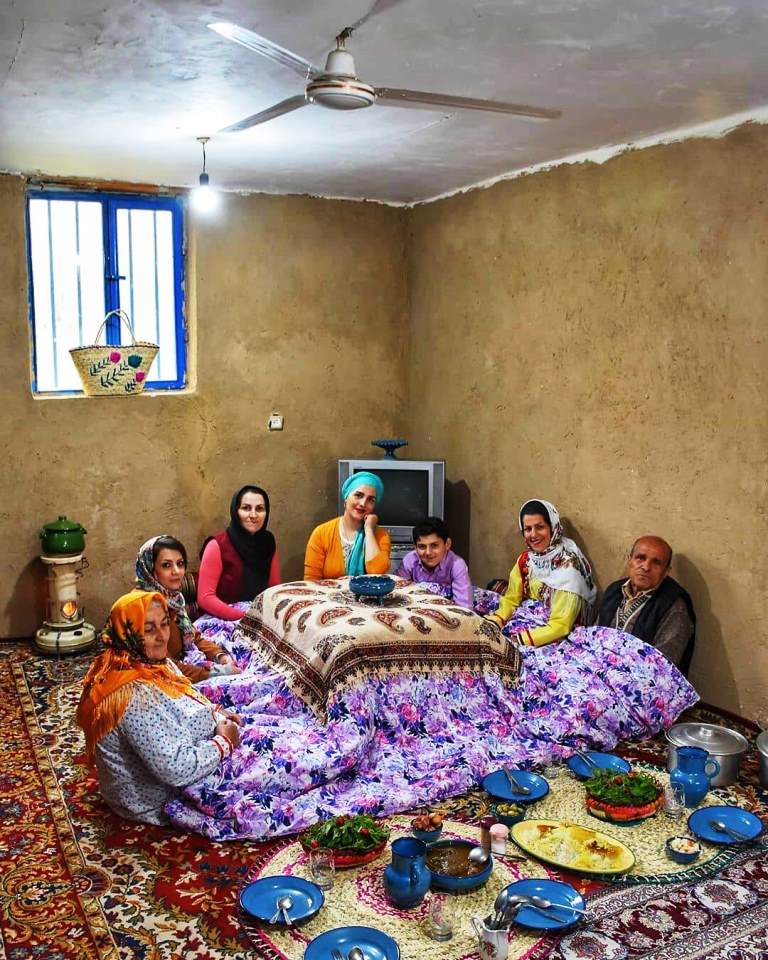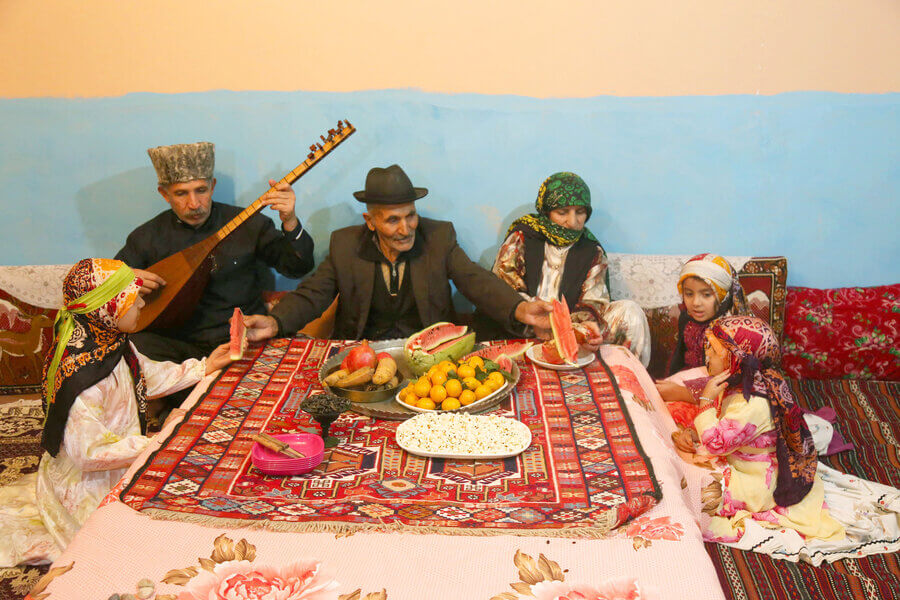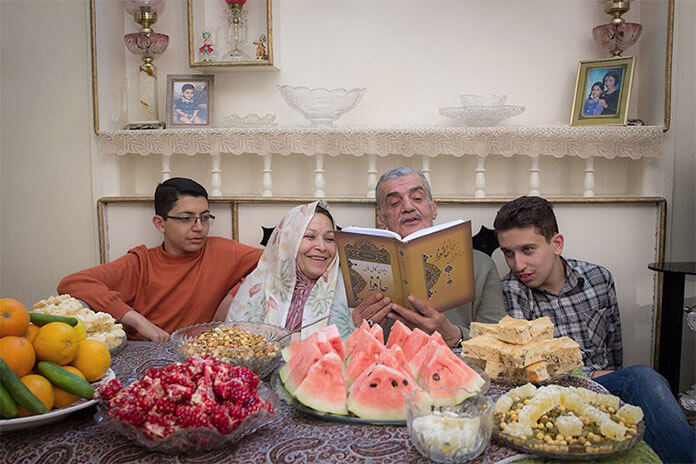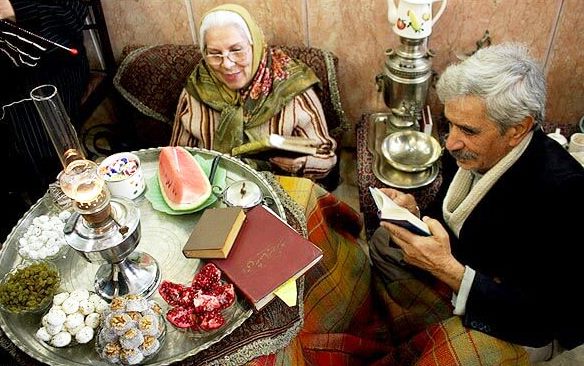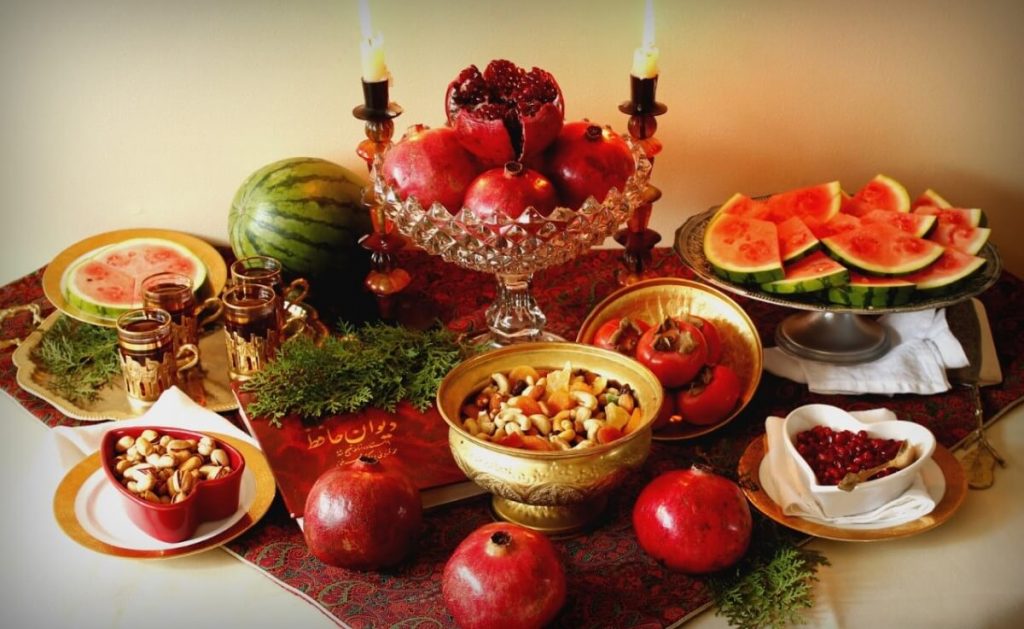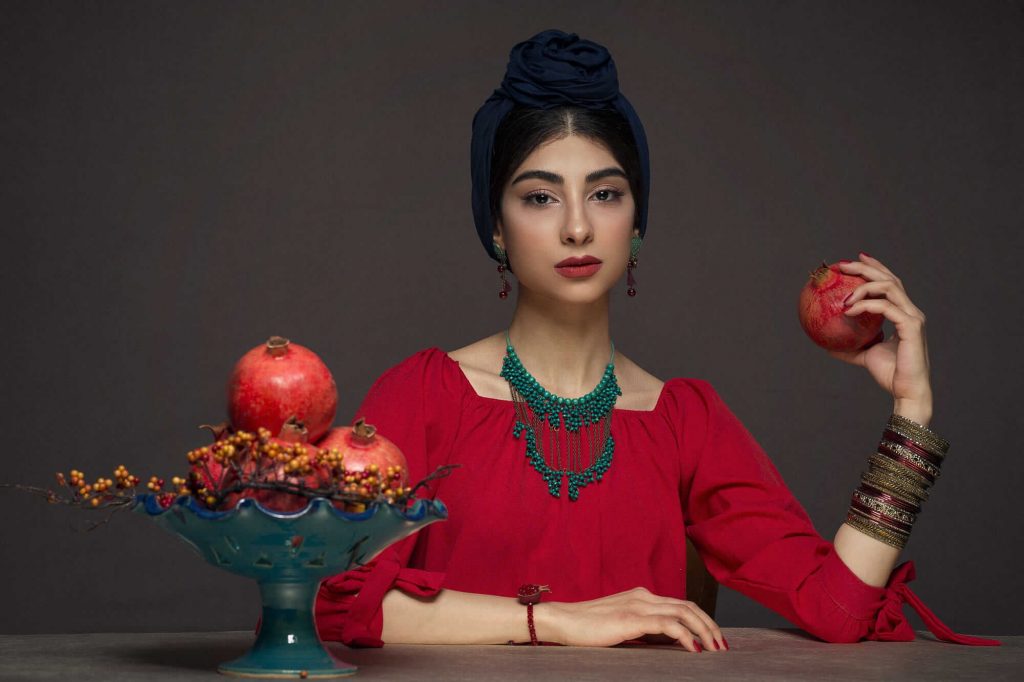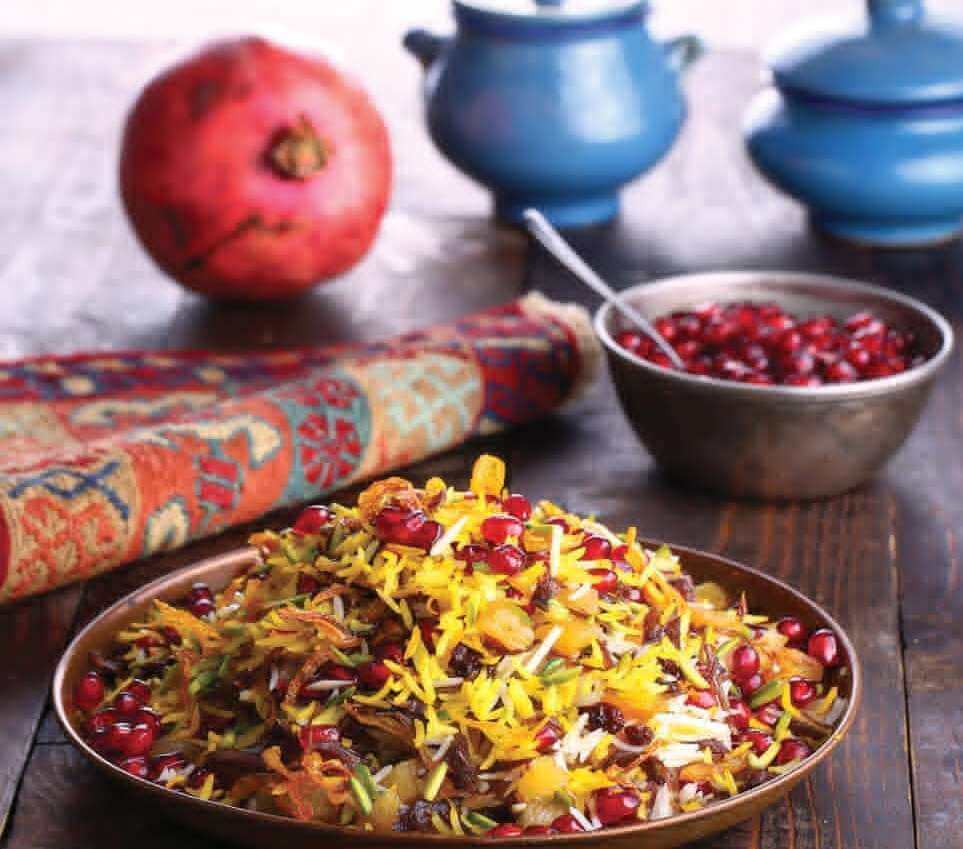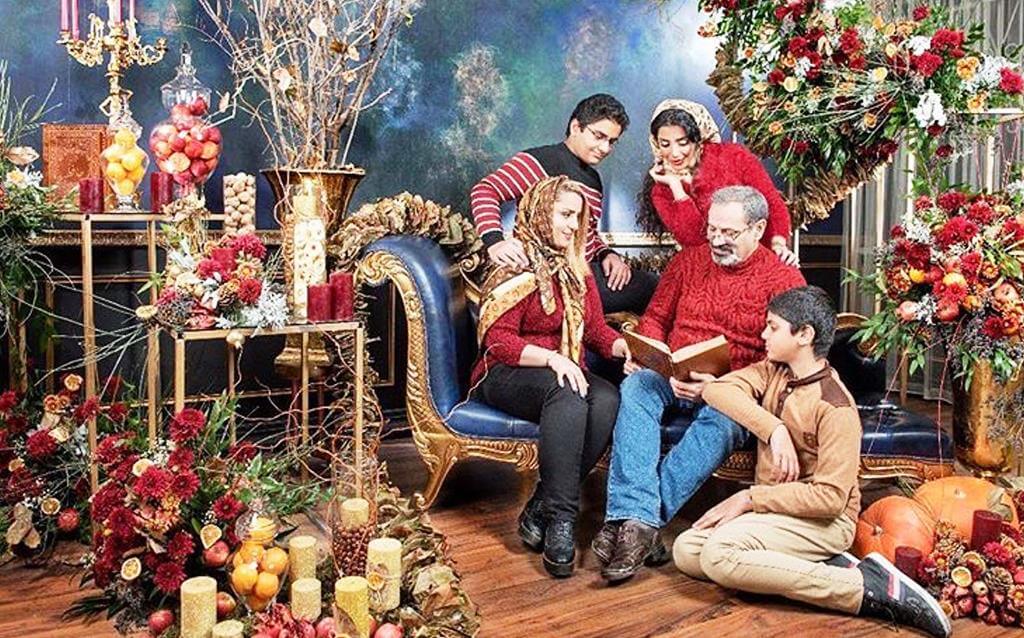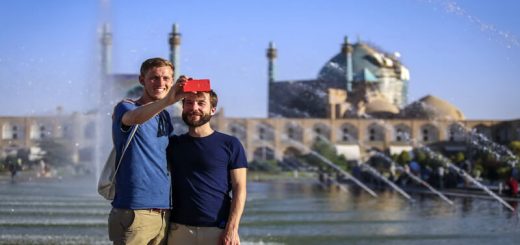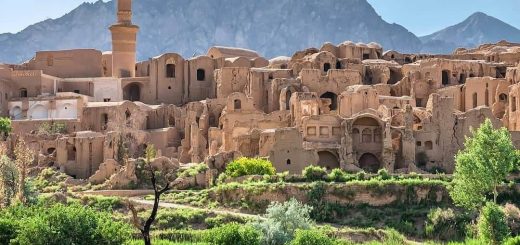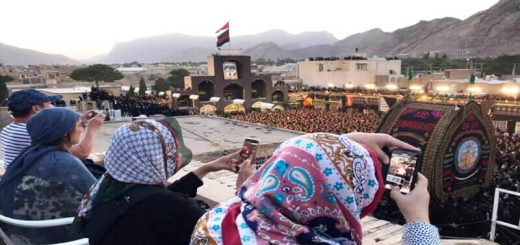Yalda Night, Celebrate the Year Longest Night with Iranians
by Admin · December 17, 2020
Yalda Night
Yalda night, Shab-e Yalda or Shab-e Cheleh, is one of the oldest Persian festivals, which, like Nowruz and Chaharshanbe Suri, is a reminder of Iran’s ancient history. Yalda night begins at sunset on the last day of autumn, December 20 or 21, and ends with the sunrise on the first day of winter. This night is longer than all the nights of the year, and after this date, the days gradually become longer and the nights shorter. Iranians celebrated this every year because their ancestors considered this night as a symbol of the end of darkness and the beginning of light. Or in other words, Yalda is the symbol of victory of light over darkness. Shab-e Cheleh, the longest night of the year, is full of memories for Iranians; family gatherings, throwing Yalda night tablecloth, decorating Yalda pomegranates, and listening to poetry and stories with other family members.
For more information about Iran holidays and Persian festivals, you can check our Iran Public Holidays and Weekend page.
Notably, “Yalda Night” or “Shab-e Chelleh” was registered by UNESCO as Iran’s 19th Intangible Cultural Heritage of Humanity alongside Afghanistan in December 2022.
History of Yalda
Like other Persian festivals, the history of Shab-e Yalda goes back to a distant past. But its exact date is unknown. Some archaeologists believe that the Yalda festival has 7,000 years of antiquity. They refer to prehistoric pottery with motifs of Iranian fish and animals, such as rams and scorpions. However, it has been proved that the Yalda night ritual dates back to about 500 BC, during the reign of Darius I, when this date was entered into the official calendar of the ancient Iranians; A calendar derived from the Babylonian and Egyptian chronicles.
"What is the meaning of Yalda night?
Yalda is a Syriac word meaning birth and refers to the birthday or rebirth of the Sun. Yalda is regarded as the longest night of the year. Every year, Iranians celebrate the transition of fall into winter, occurred at the Winter Solstice, like other Persian celebrations coincide with the change of seasons."
What are the Customs of Yalda?
Yalda night customs have not changed much over time. Join us to tell you about the traditions of the Yalda event.
Fire
Yalda gatherings are now heated by heaters; before, Iranians gathered around Korsi, and before that, around fires.
Why fire? Historically, fire was a symbol of light and the sun. The demonic forces were also believed to be destroyed by lighting fire.
“What is korsi?
It is a 50 centimeter high our-legged table with a heater underneath it, and blankets and comforters thrown around it. They decorate it with a piece of jajim or kilim. Some cushions and poshti (a kind of cushion lean against the wall) are put around korsi.”
Proverbs or Storytelling on Yalda Night Ceremony
Proverbs, poetry, and storytelling were mainly practiced in ancient times. This way, families gathered on this night, and the elders told stories. They are usually fairytale stories where most heroes are animals, demons, and fairies.
Notably, in each part of Iran, people tell stories about their culture. For example, Azerbaijanis read the story of Hussein Kurd Shabestari, and Khorasanians prefer Shahnameh stories.
Hafez Divination on Shab-e Yalda
Usually, Hafez omen on the night of Yalda is one of the popular customs of this ceremony. To do this, an elder asks the family members to make secret wish one by one. Then, the elder says: Hafez Shirazi, you are the discoverer of every secret; I want a fortune, take a look at me…. Then, they randomly open the Hafez poetry book and read the poem on the page. Afterward, they interpret the omen as Hafez’s response to the Yalda Night wishes. If the poem’s content is positive, the omen is considered good, and if it is not, it is considered bad. However, since most of Hafez’s sonnets have mystical, romantic, and hopeful content, usually, the omen is considered good.
Reading Shahnameh on Yalda Night Gathering
Another inseparable part of the Shab-e Cheleh ritual is reading Shahnameh, the masterpiece of Ferdowsi, the great Persian poet. The charm of reading Shahnameh is multiplied by the narrative method. Unfortunately, this narrative tradition is disappearing.
Yalda Table (Sofre Shab-e Yalda)
The protagonist of Shab-e Cheleh is its table and food. Yalda night table includes the main course, special fresh and dried fruits, nuts, and other snacks. The ancient components of Sofre Shab-e Yalda were fireplaces, perfume bottles, humidifiers, etc.
Shab-e Yalda Nuts
Nuts such as pistachios, walnuts, dried chickpeas, almonds, and hazelnuts are the main components of nuts for Yalda night. In the past, it was not easy to store fruits for a long time; Many fruits were dried for storage and consumption in other seasons. So, there are traditionally different kinds of dried fruits on the Yalda table, such as raisins, figs, and dried berries. Apart from these, roasted wheat, watermelon seeds, pumpkin seeds, and Iranian sweets such as Baslogh and Pashmak are on the Yalda table.
Shab-e Yalda Fruits
All kinds of fruits are on the Yalda table, but red fruits play the primary role. The red color of these fruits is a symbol of the sun. One of these fruits is watermelon because Iranians believe that by eating watermelon, a summer fruit, the cold will not affect them during the winter. Besides, the pomegranate, as a symbol of happiness and fertility, is the favored fruit of Yalda night. Similarly, persimmons, medlars, apples, and oranges are in the fruit basket for the year’s longest night. But why are watermelon and pomegranate the flagship fruits of Yalda Night table?
In our Iranian culture, the importance of red has a history of five thousand years. Before settling on the present-day plateau of Iran, the Iranians lived in a cold region. So, the heat of the sun was vital to them. Hence, they cherished everything related to the sun, like the red color of dawn. Consequently, the color of these two delicious fruits comes from believing in the ruby color of dawn.
Preparing Yalda Dinner
Since the Yalda night ritual is an ideal opportunity to reunite with relatives, everyone does their best to prepare a delicious dinner. The Yalda night food can include local Persian food such as rice with fish (Sabzi Polo ba Mahi), barberry pilaf, pomegranate pilaf, cabbage pilaf Shirazi (Kalam Polo Shirazi), etc.
If you are interested in traditional Iranian dishes, please check our Persian food page.
Taking Gifts to Newlyweds
On Shab-e Chele, the newlyweds’ families prepare gifts for each other called “Shab Chelei.” This custom is different for each city and is performed in a particular way. The philosophy of this tradition was that, in the past, the bride and groom could meet only in special situations such as Yalda. As a result, the groom’s family asked the bride’s family to allow the bride to attend the Yalda night ceremony in their house. The Shab Chelei gift includes various sweets, fabrics, bags, shoes and winter clothes, gold, nuts, dried fruits, etc. This custom is still practiced in some cities in Iran.
Participating in Yalda Night Event
Shab-e-Yalda festival and its fascinating traditions were added to Iran’s List of National Treasures in 2008. Yalda Event is also celebrated in Tajikistan, Afghanistan, Uzbekistan, Turkmenistan, Armenia, and Azerbaijan.
So, if you are planning a trip to Iran, you can set your travel date for late December and celebrate Yalda night with Iranians. Because on the one hand, the Shab-e Cheleh ritual is one of the most beautiful celebrations in Iran; On the other hand, the Yalda night date (December 20 or 21) is very close to the Christmas holidays. Besides, if you travel to Iran in winter, the Iran travel cost is cheaper than in the high season.
For more information about the best time to travel to Iran, you can check our Iran weather page.
If you, as a tourist, are interested in participating in the Yalda night celebration in Iran, you have two options. First, you can go to the Iranians’ house with prior coordination and celebrate Yalda. The second, much easier option is to join the locals who celebrate Yalda night in restaurants and cafes all over the country.
“How do you say Happy Yalda in Persian? So remember if you see Persian people around you on Dec 20-21, tell them “Shabe Yalda Mobarak!” or شب یلدا مبارک meaning Happy Yalda!”
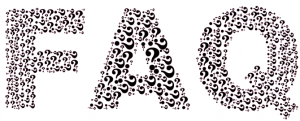
Most Frequent Questions and Answers about Yalda Night
Like this article?
Subscribe To Our Newsletter
Get updated articles about Iran trip
